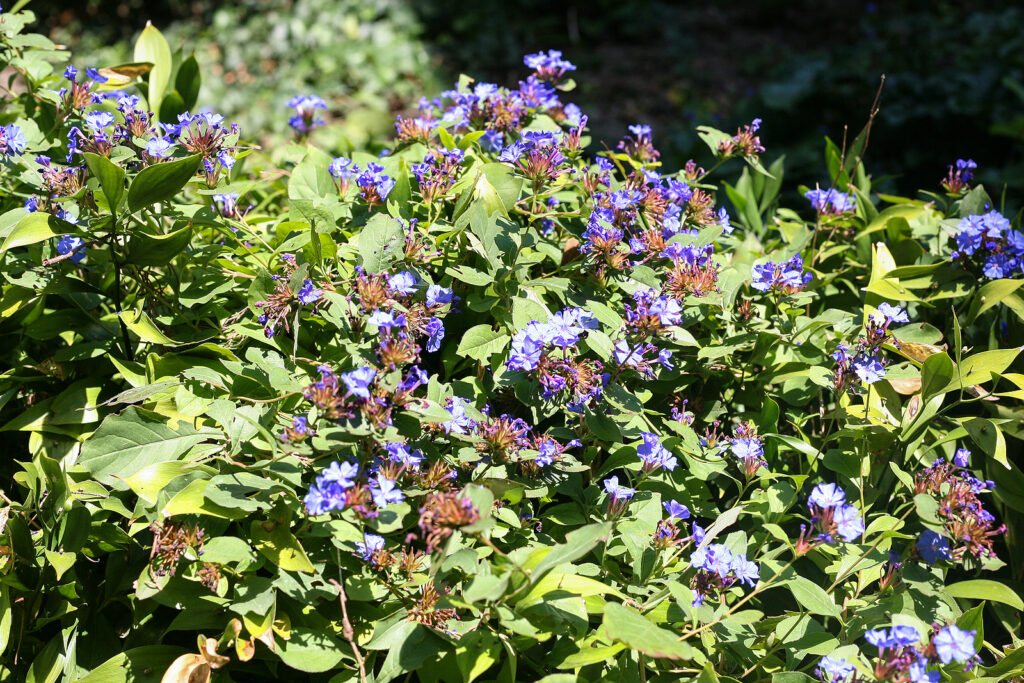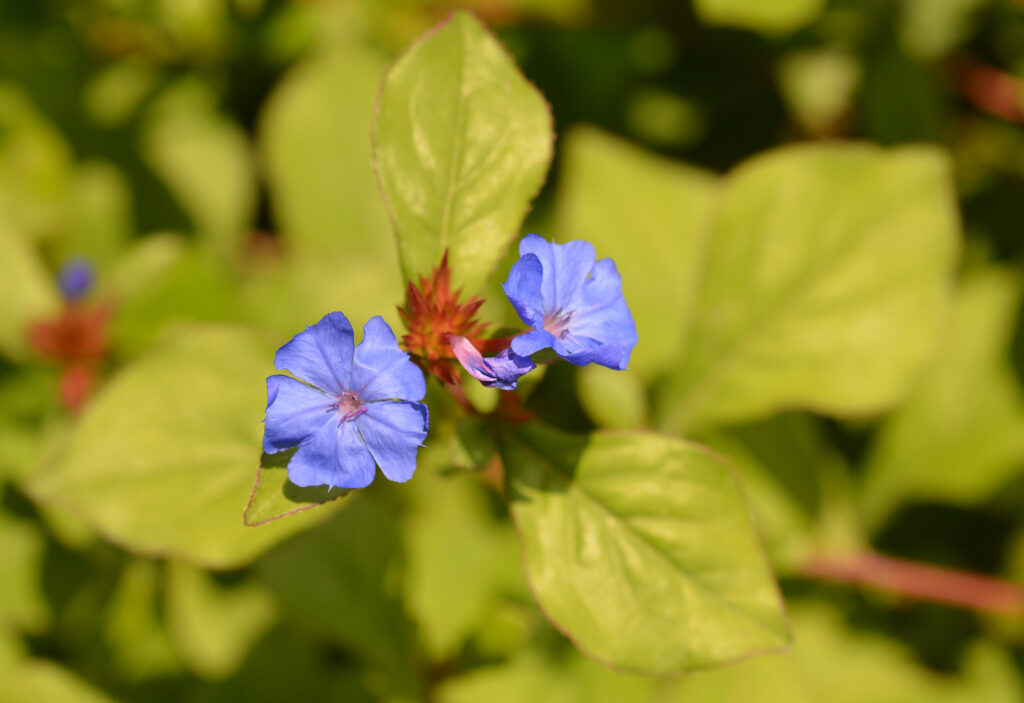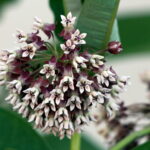Ceratostigma–commonly called dwarf plumbago, sometimes called leadwort–is a low-creeping, semi-woody perennial with deep gentian blue flowers from mid-summer to autumn. It is a sturdy groundcover under the dry shade of large shrubs and trees. Leaves commonly turn deep orange in autumn adding seasonal flair to the garden.
Ceratostigma is not to be confused with a very similar plant known as Cape plumbago, Plumbago auriculata, which is a mounding shrub that grows to 6 feet (1.8m) tall and twice as wide. The flowers and leaves of the two plants are very similar.
Ceratostigma is a semi-evergreen plant. It may drop its leaves when hit by a hard freeze, but commonly the leaves turn bronze to red in autumn and remain on the plant.

Get to know Ceratostigma
- Plant type: Perennial groundcover
- Growing Zones and range: Zones 5 to 9
- Hardiness: Hardy to -10°F (-23°C); will survive winter in Zone 5 if mulched.
- Height and width: 6”- 12” tall (15-30cm), 12”- 18” wide (30-45cm)
- Form: Creeping, semi-woody perennial with bright green 3-inch oval to wedge-shaped leaves that turn reddish in fall; spreads rapidly by underground stems
- Flowers: Brilliant blue five-lobed flowers in clusters on the tip of stems
- Bloom time: Late summer to autumn
- Uses: Groundcover, under shrubs, along walks, rock walls
- Garden companions: Interplant with spring and fall-flowering bulbs such as crocuses and daffodils
- Common name: Plumbago, dwarf plumbago, blue plumbago, leadwort
- Botanical name: Ceratostigma plumbaginoides
- Family: Plumbaginaceae
- Origin: China and the Himalayas
Where to plant Ceratostigma
- Plant Ceratostigma in full in Zones 5 to 6; plant in light shade in Zones 7 to 9.
- Grow Ceratostigma in humus-rich, well-drained soil. Ceratostigma will not tolerate wet soggy soil.
- Plants will survive on dry, sunny soil and in dry shade under shrubs and trees.
- Where winters are chilly, plant Ceratostigma against a south-facing wall.
Ceratostigma uses and companions
- Plant Ceratostigma in a perennial border or in a mixed border with shrubs or in a shade garden.
- Ceratostigma is an excellent ground cover in combination with spring and fall bulbs.
- Good garden companions for Ceratostigma include Coreopsis, Oenothera, Sedum spectabile and ‘Autumn Joy’, Stachys lanata, Zauschneria.

When to plant Ceratostigma
- Set seedlings outdoors in spring.
- Container-grown plants and divisions should be planted in early spring.
Planting and spacing Ceratostigma
- Space Ceratostigma 18 to 24 inches (45-61cm) apart. A bit closer as a groundcover on slopes.
How to water and feed Ceratostigma
- Keep the soil just moist, but not wet.
- Fertilize Ceratostigma lightly with an all-purpose fertilizer in spring.
Ceratostigma care
- Mulch with shredded leaves or straw during winter in Zones 5-6.
- Cut back woody stems to stimulate new growth.
- Foliage turns yellow in fall.
Ceratostigma pests and diseases
- Ceratostigma is prone to powdery mildew and root rot in wet conditions.
Ceratostigma propagation
- Ceratostigma seeds germinate in one to three months at 60°F (16°C). Refrigerate seeds for a month before sowing.
- Divide Ceratostigma in late winter or early spring before growth begins.
- Take tip semi-ripe cuttings in mid summer.

Ceratostigma varieties to grow
- Ceratostigma griffithii: Evergreen multi-stemmed shrub to 32 inches (80cm) tall and wide; deep blue flowers in late summer to mid autumn; dull green leaves turn bright red in autumn.
- C. plumbaginoides: Semi-deciduous to deciduous shrub to 16 inches (40cm) tall and 20 inches (50cm) wide; brilliant blue flowers from early to mid autumn; deep green leaves turn red in autumn.
- C. willmottianum, Chinese plumbago: Deciduous shrub grows to 36 inches (60cm) tall and wide; rich blue flowers in profusion from mid summer to mid autumn; green leaves become red in autumn.















